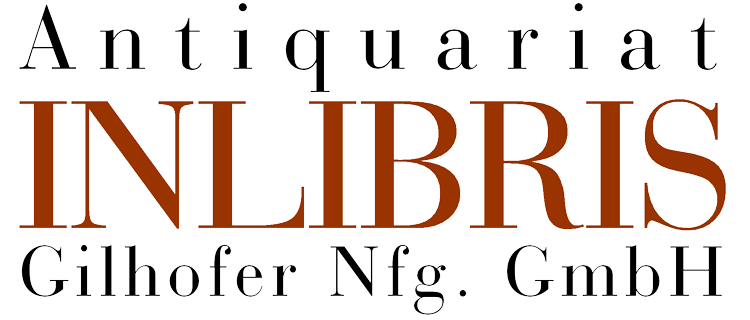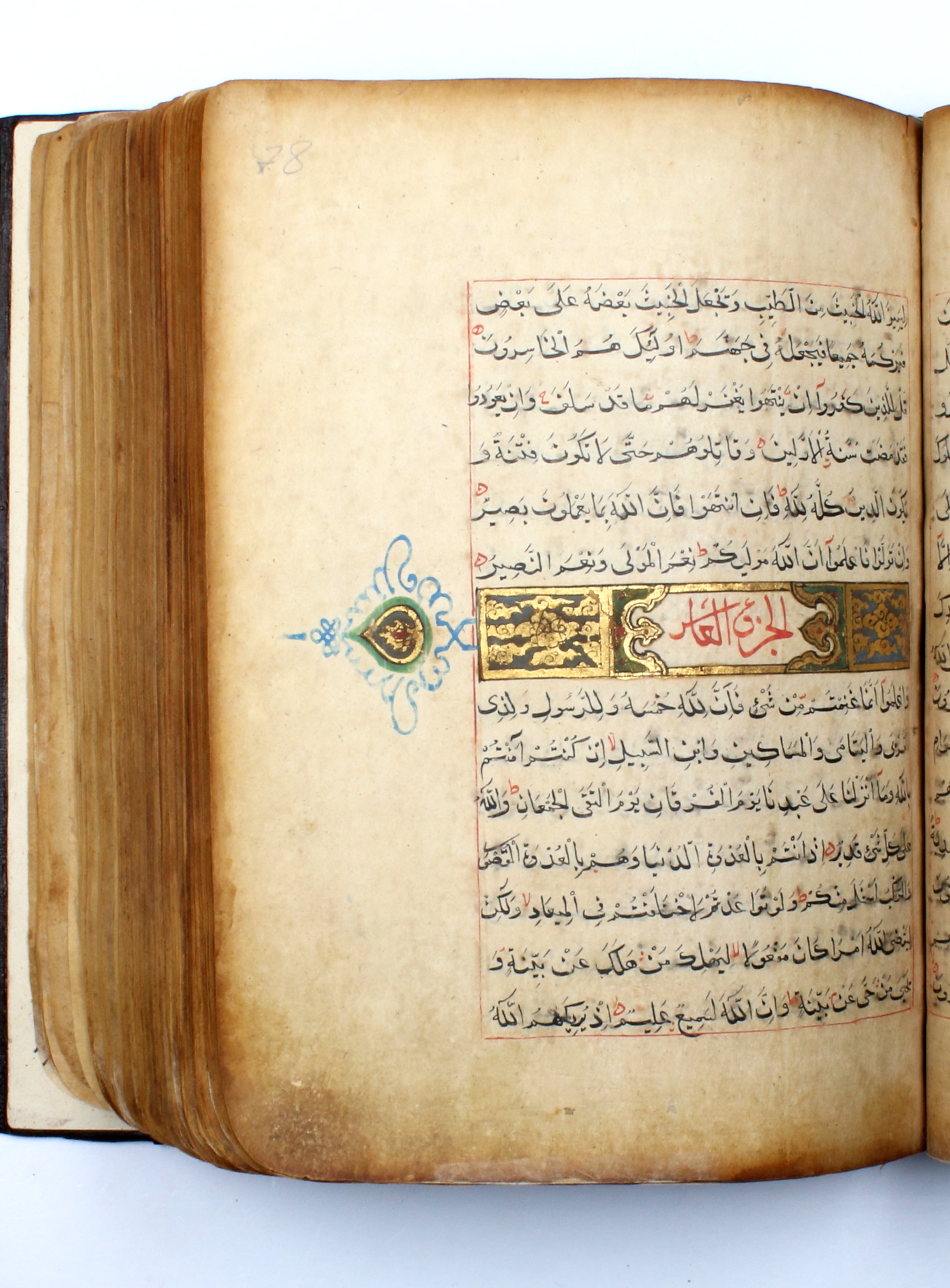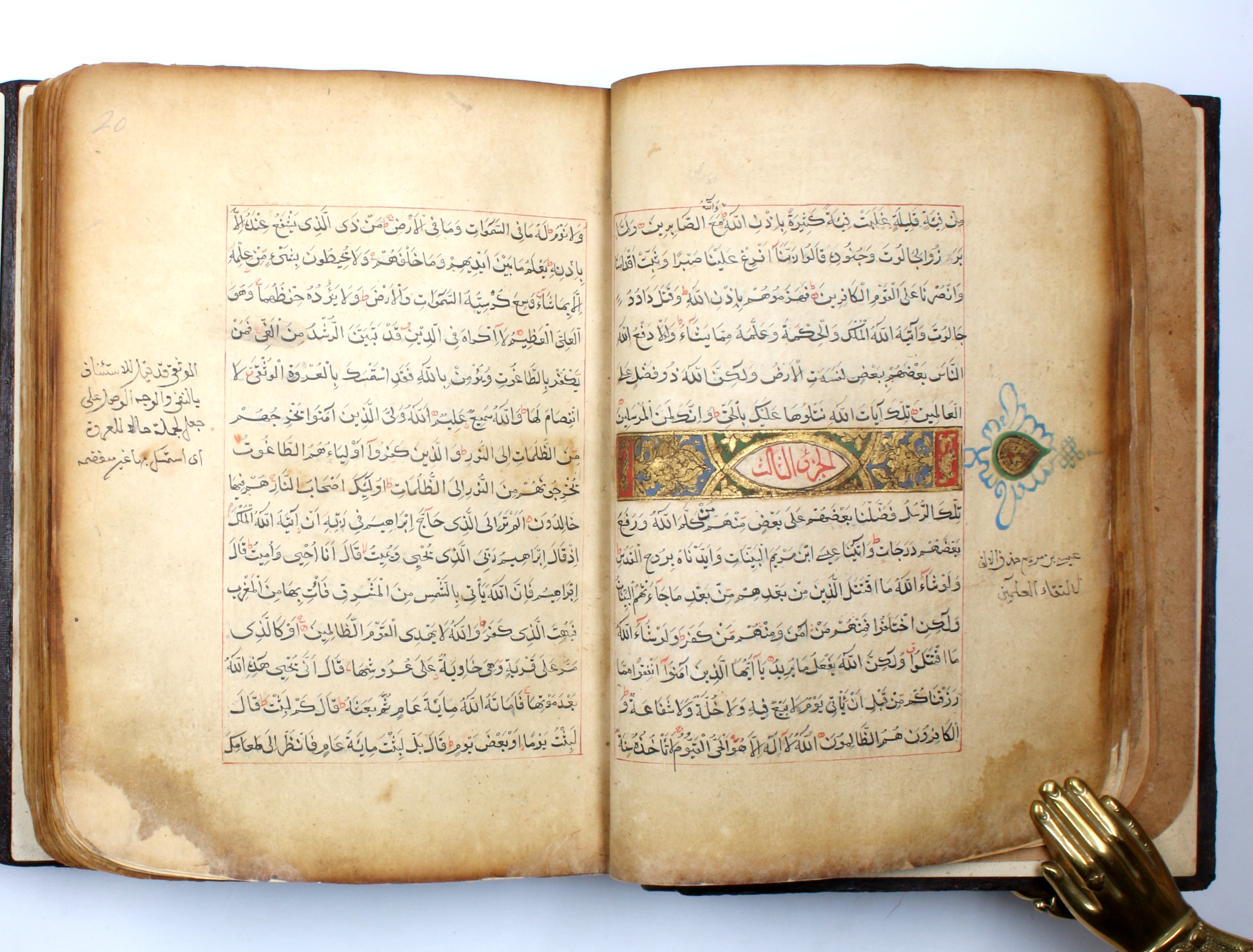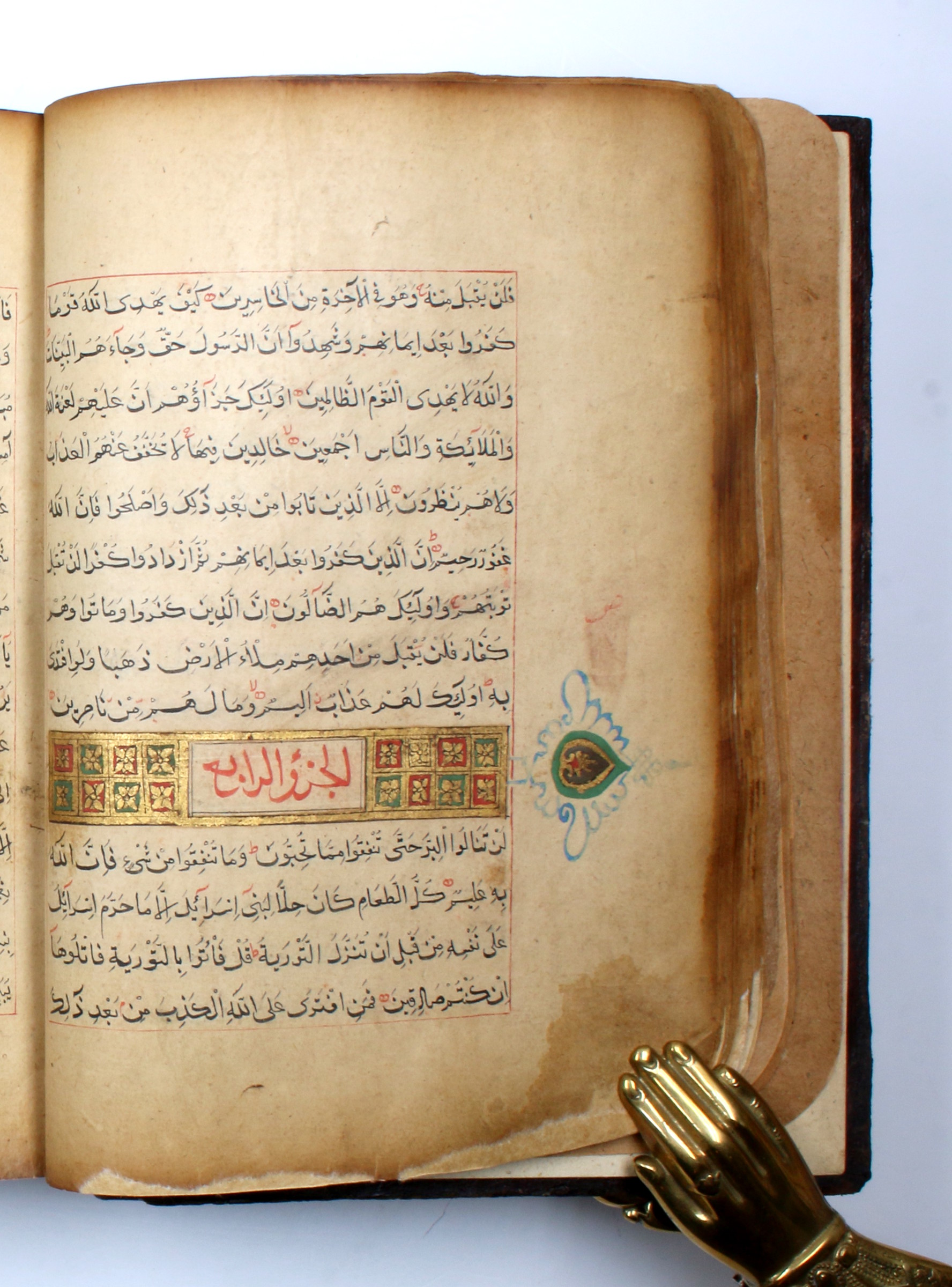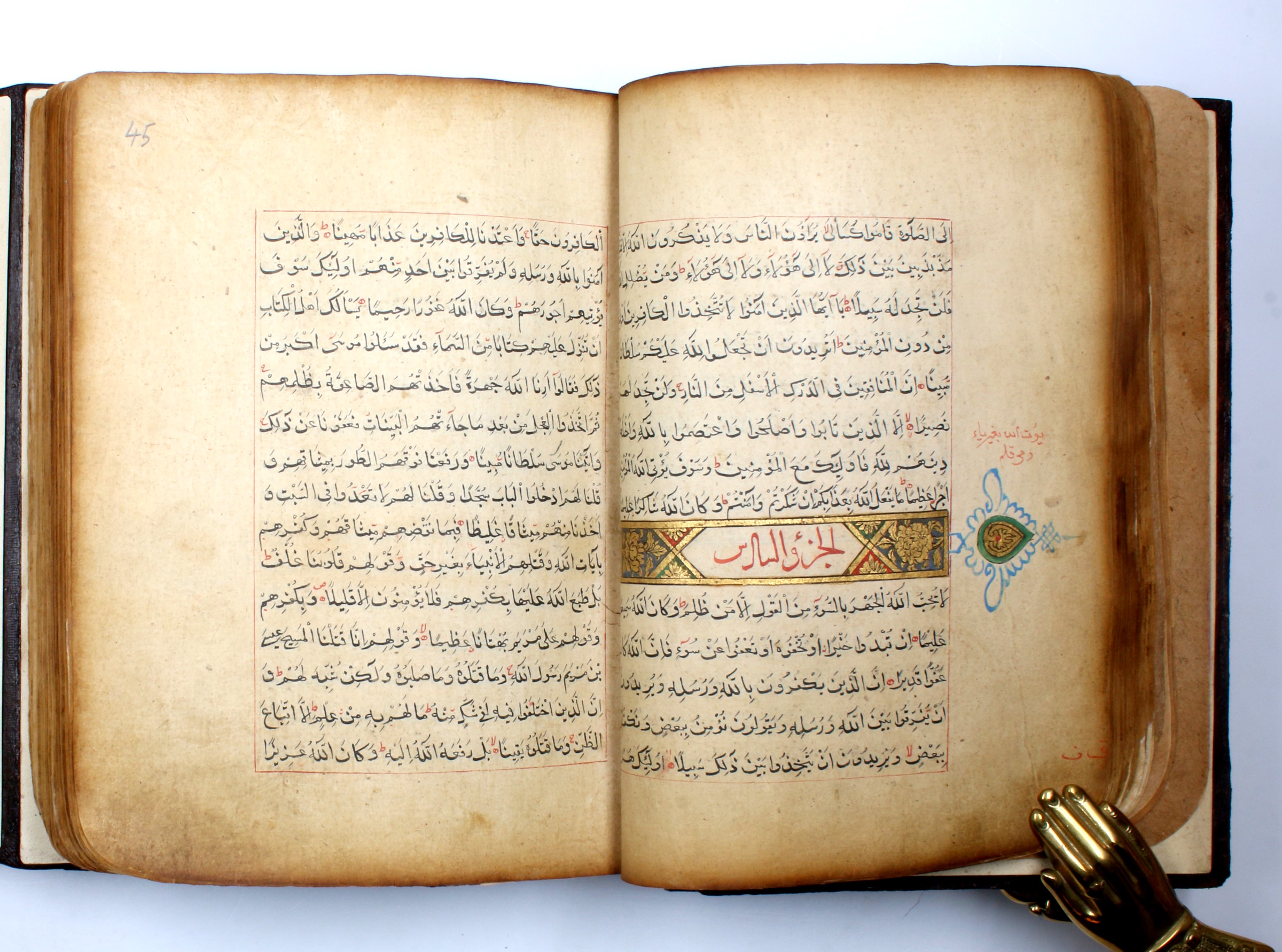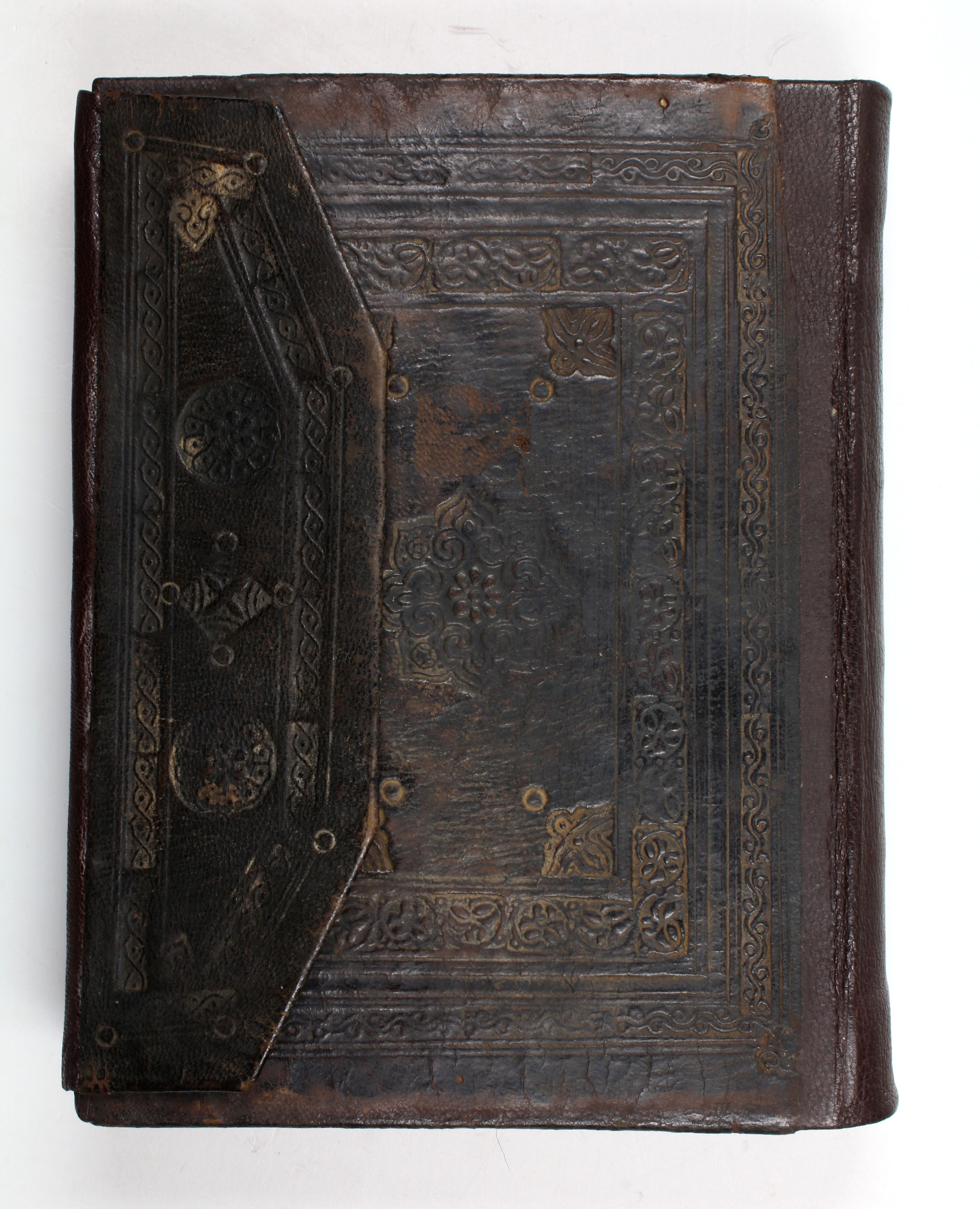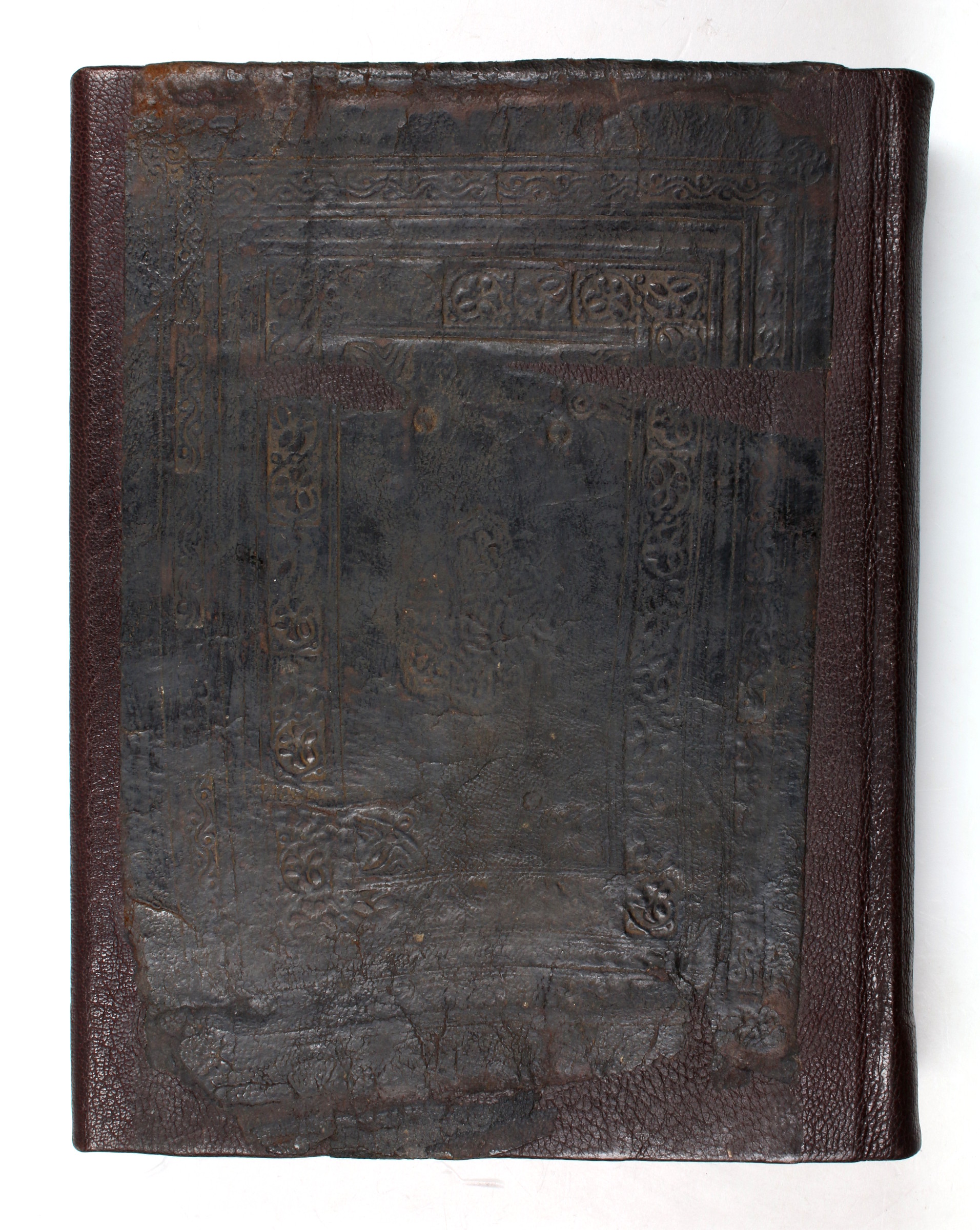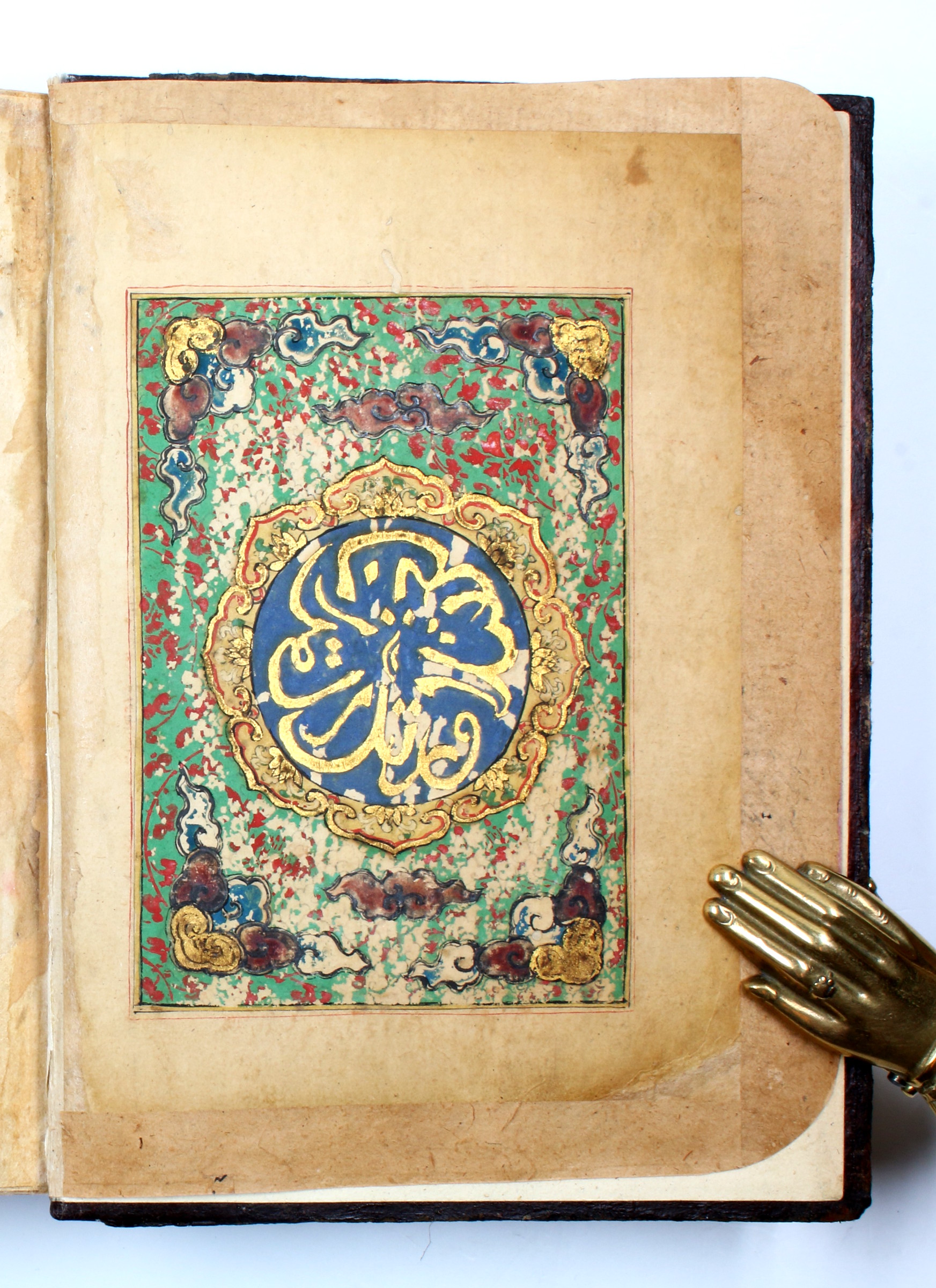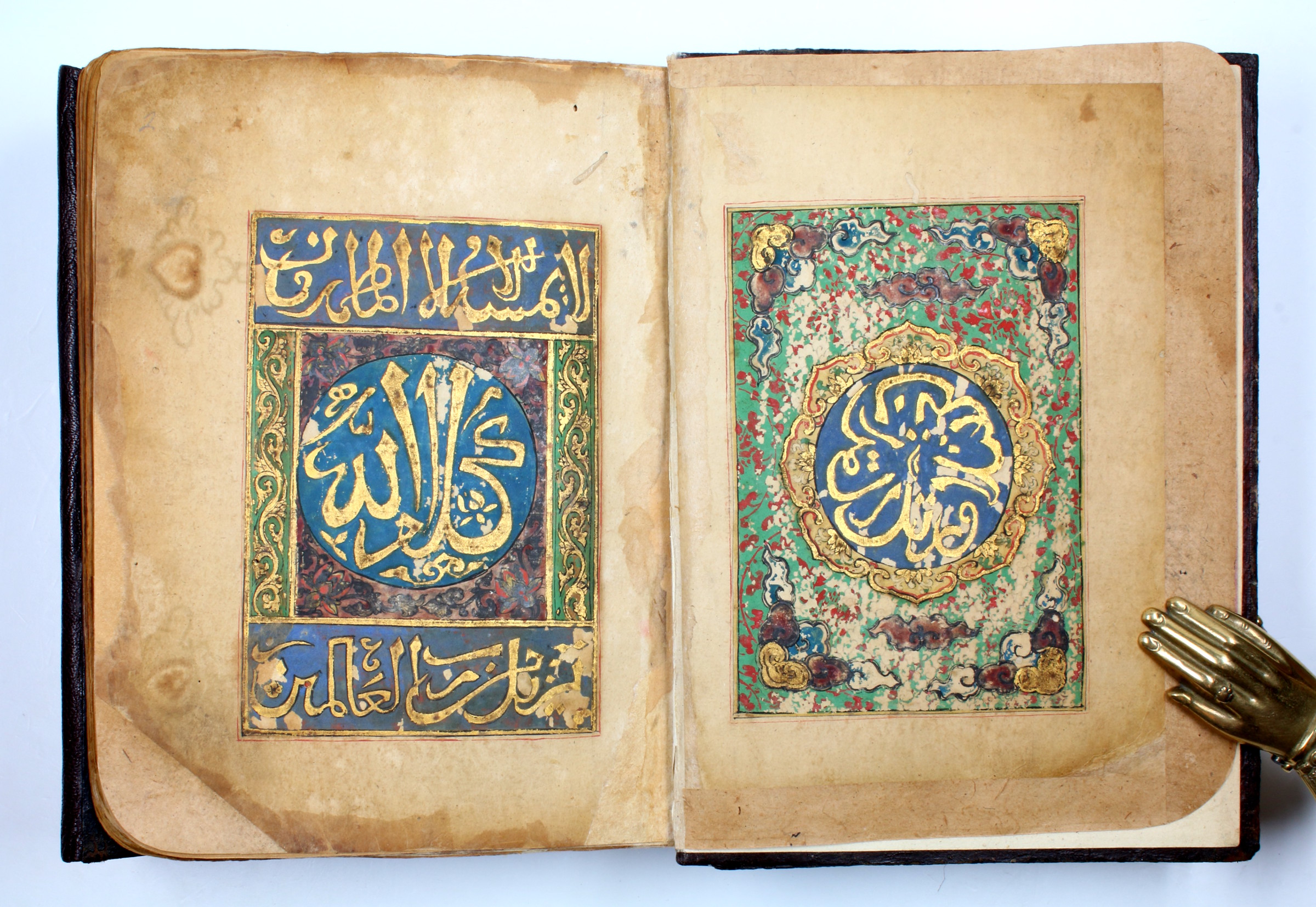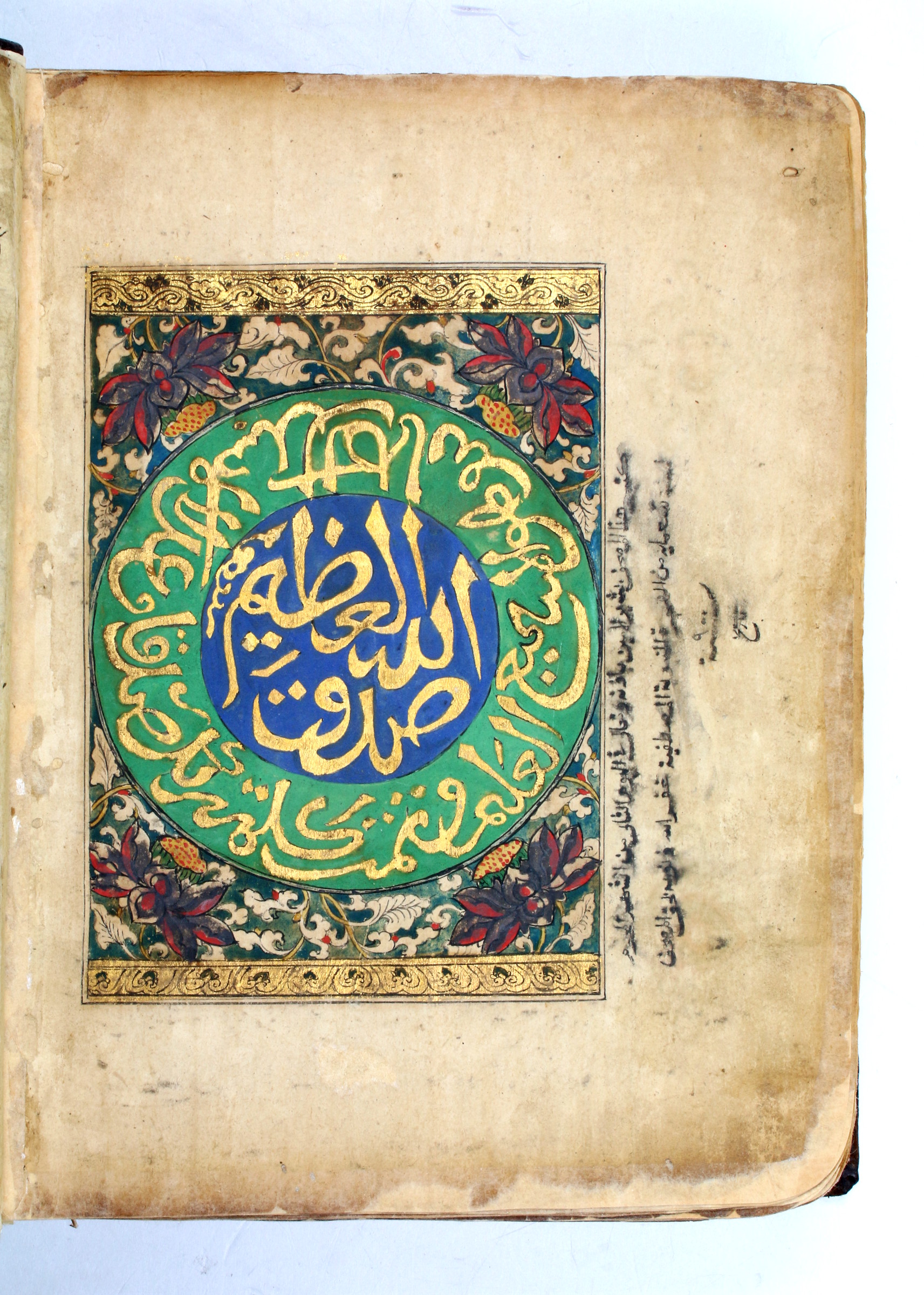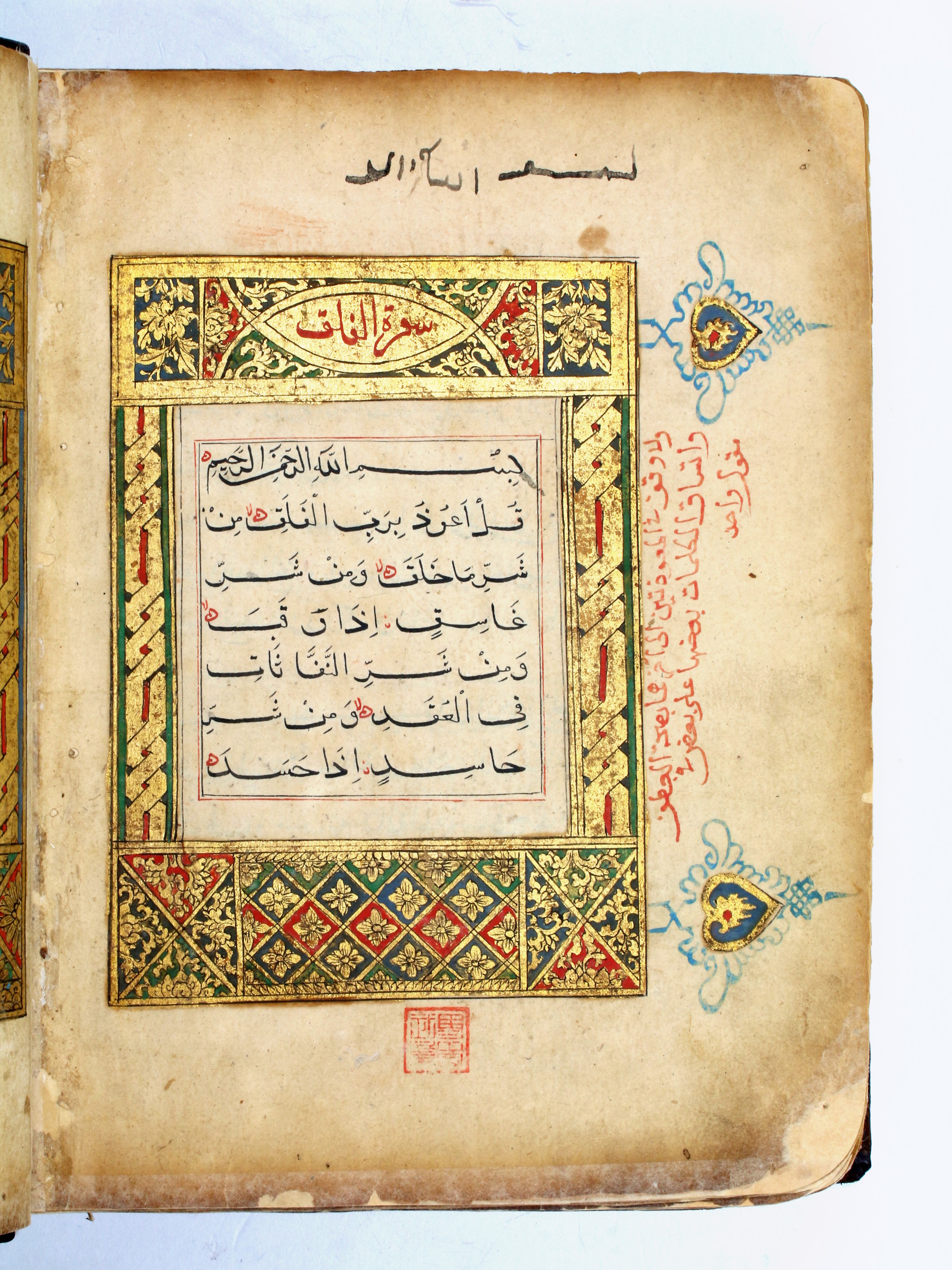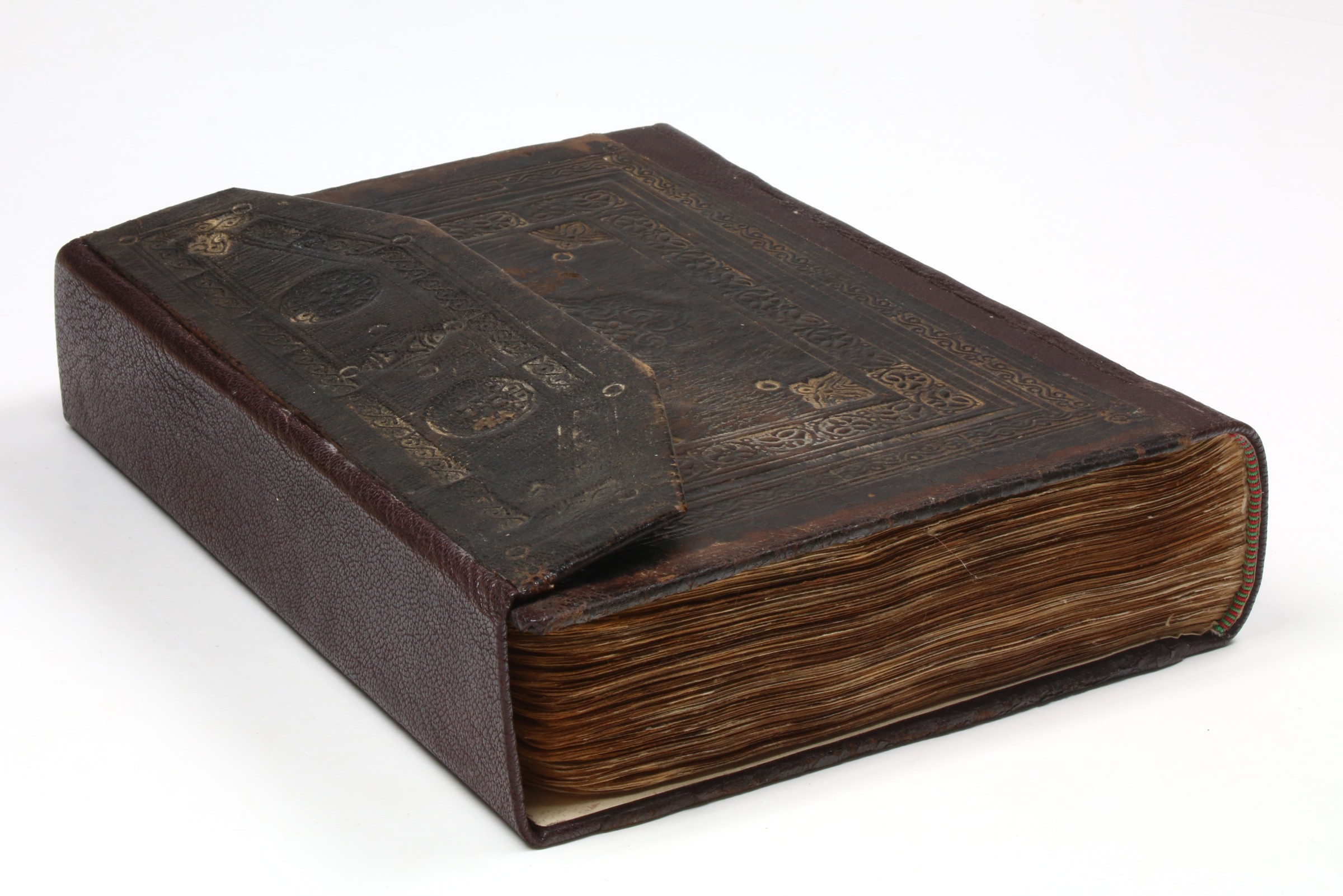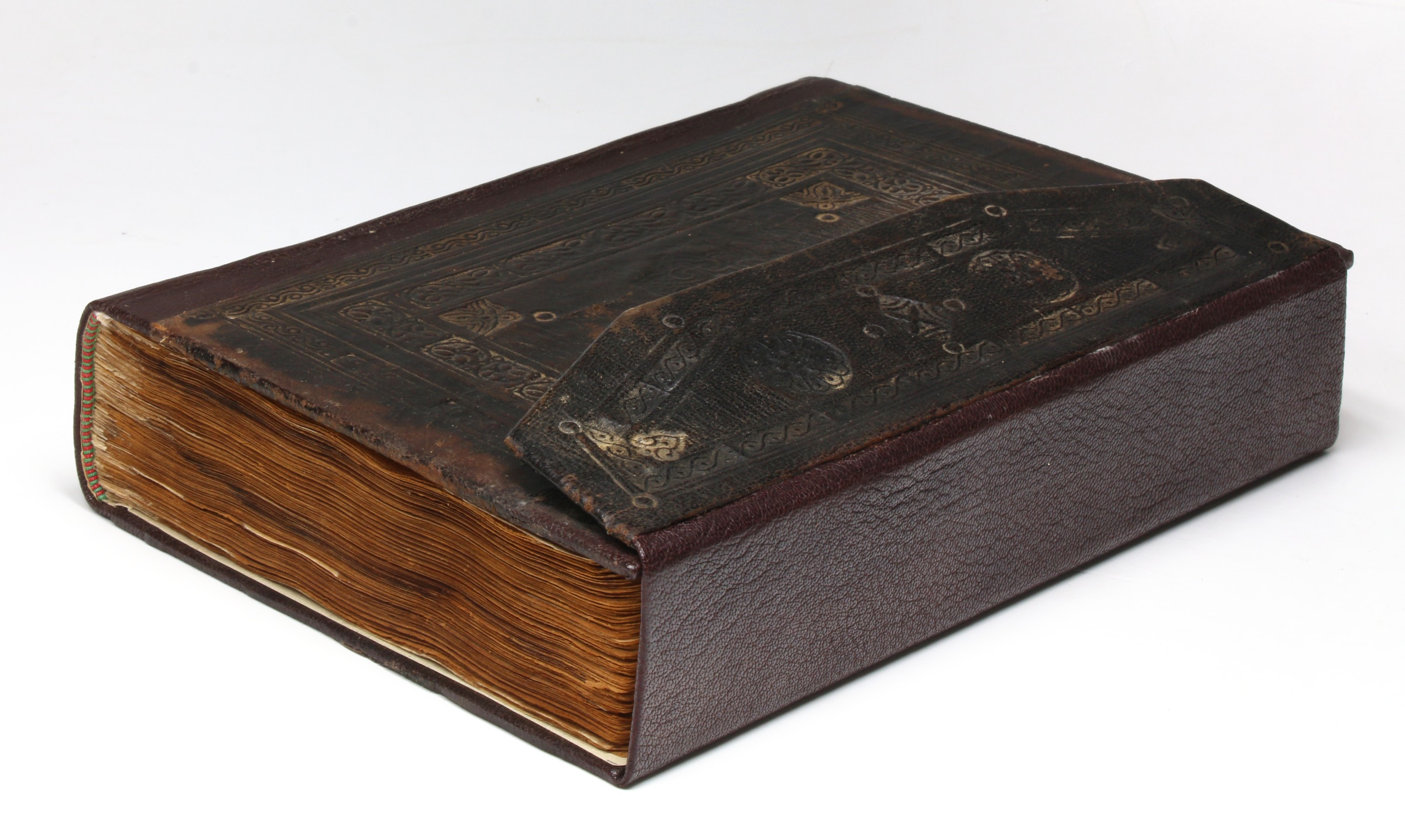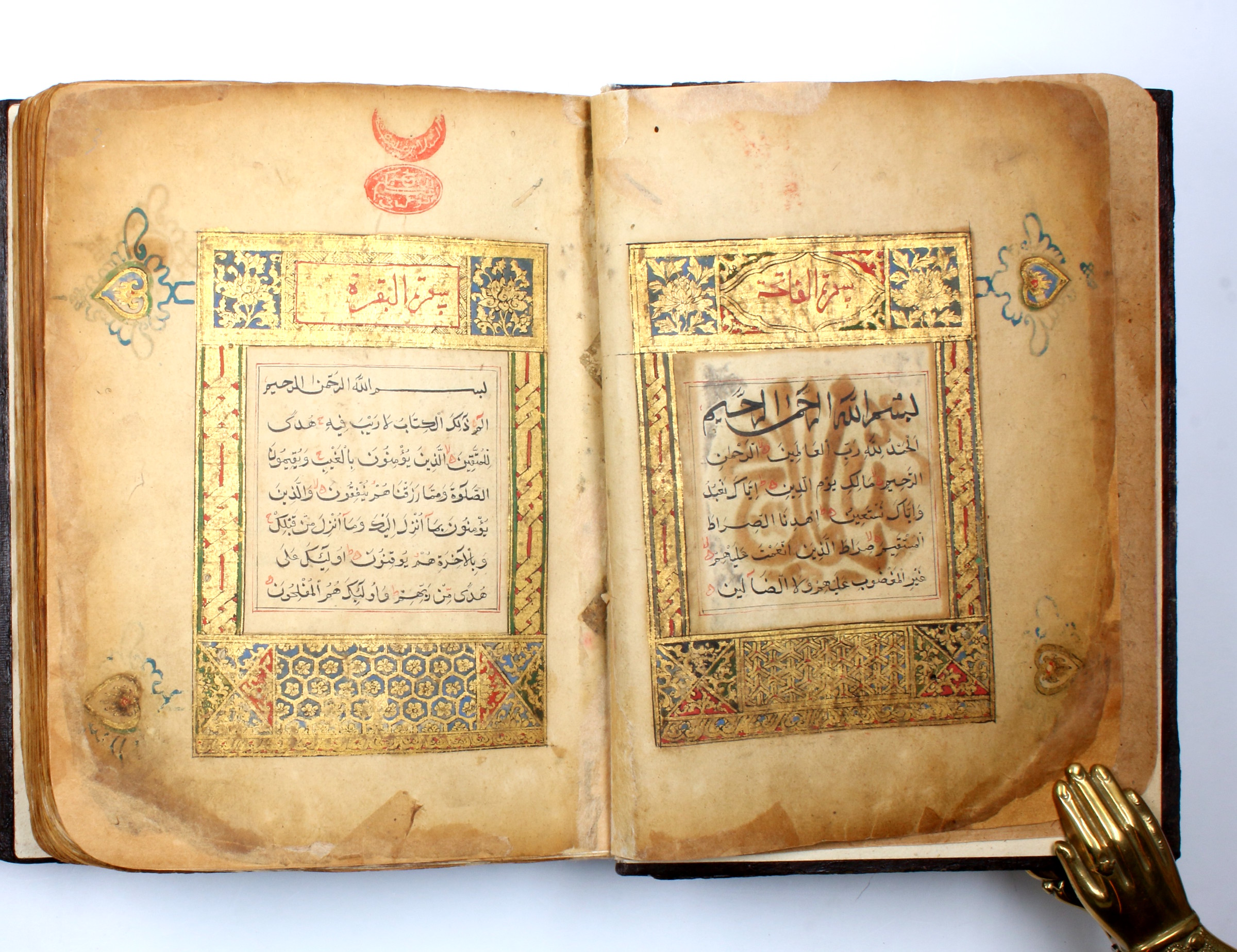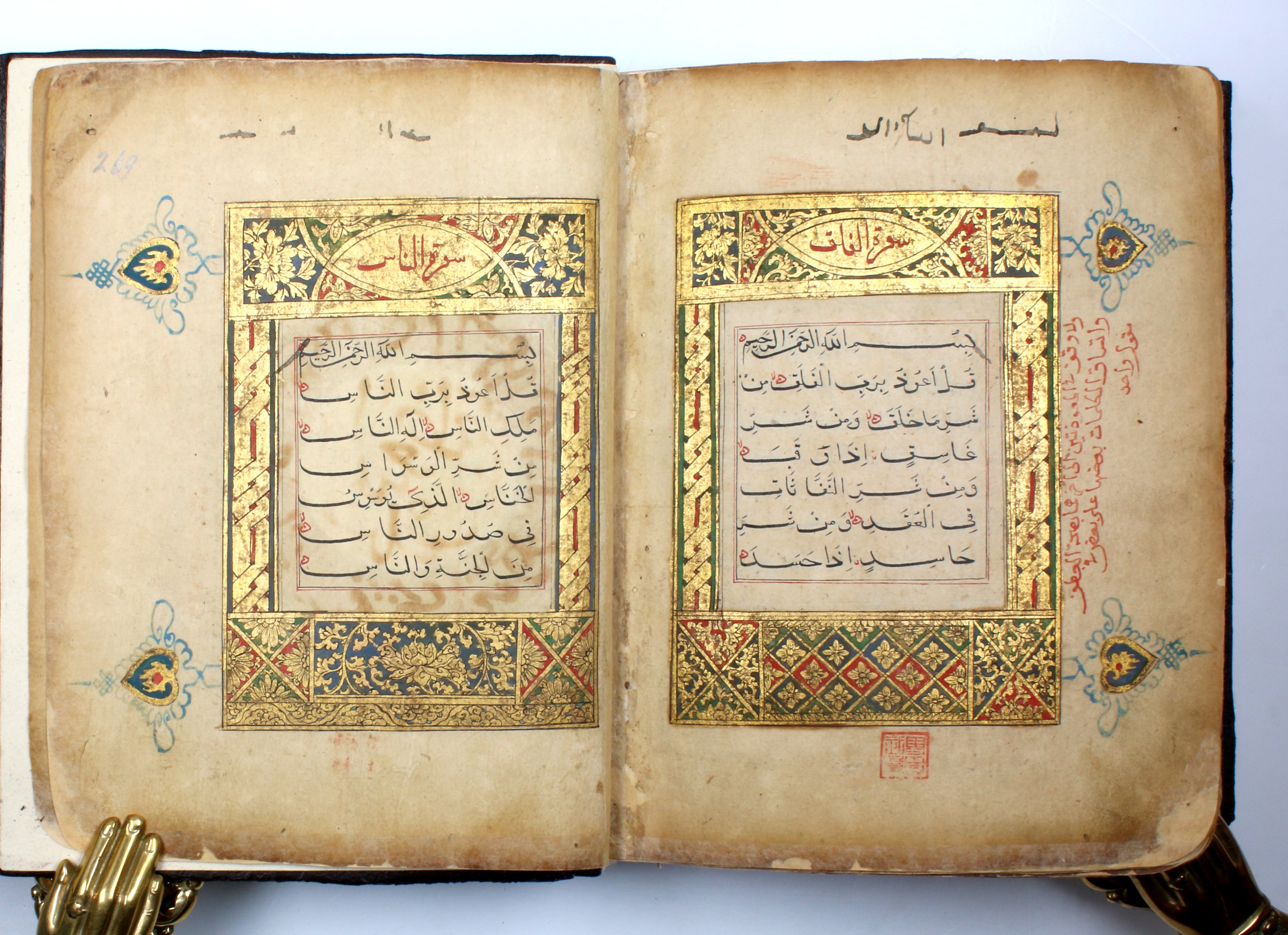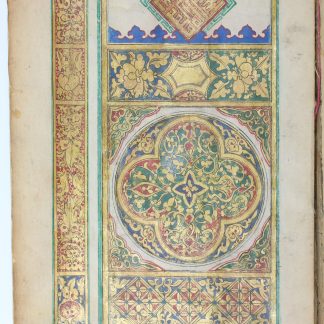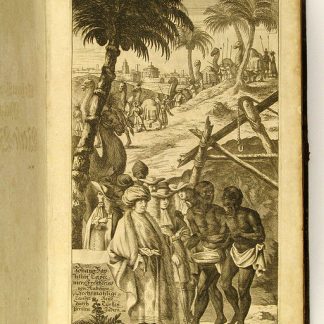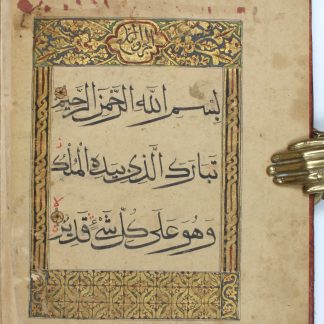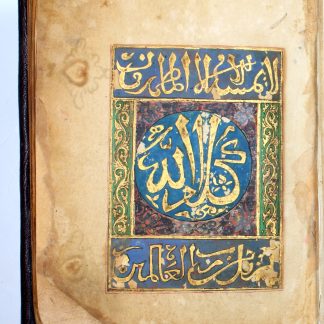One of the earliest extant Chinese Qur'ans
Illuminated Chinese Qur'an.
4to. Arabic manuscript on paper. 270 ff., 15 lines. Elegant black naskh with diacritics and vowels in red, surah headings and verse markers in red. With 2 double-page illuminated 'unwan, 3 full-page calligraphic illuminations, and illuminated titles and marginal medallions throughout. Contemporary leather elaborately ruled in blind, with patterned borders and medallions, including flap. Housed in custom cloth case.
€ 250,000.00
The earliest traceable Ming Dynasty Qur'an, one of the a very few extant examples of its kind. Sumptuously illuminated and still in its contemporary binding, this manuscript is dated to AH 900, or 1494 CE.
Chinese Qur'ans from the 15th century usually appear only in Juz' form (which splits the holy book into thirty sections, each forming a separate manuscript); by contrast, complete, single-volume specimens are almost non-existent in the trade. Only one earlier Chinese Qur'an, the famous Yuan Dynasty Qur'an which commanded £388,800 at Christie's in 2006, has appeared at auction: the present manuscript is dated only 157 years later, in the early Ming dynasty. Few Chinese Qur'ans are available in institutions, and fewer still from the Ming period. Among the exceptions are those in the Museum of Islamic Art in Doha and in the Asian Art Museum San Francisco, both of which own comparable but later Qur'ans; the Doha specimen is undated but no earlier than the 17th century CE (thus, late Ming).
A Qur'an like this one would probably have been crafted among one of the several Muslim religious and intellectual hubs in Ming China, perhaps even in Nanjing itself, then the centre of Muslim learning and, together with Beijing, one of the two capitals of the Ming. Despite new restrictions placed on Muslim communities after the fall of the Yuan, during the Ming period several important Chinese military officials and generals were Muslims; the Zhengde Emperor (1491-1521), who reigned during the completion of this manuscript, had numerous Muslim advisors at his court and collected several items of porcelain decorated with Islamic calligraphy. Indeed, this era saw perhaps the most famous Chinese Muslim of all: Zheng He (1371-1433/35 CE), confidant of emperors, admiral, explorer, diplomat, and court eunuch. Zheng He headed seven Ming Treasure Voyages which reached as far as the Arabian Gulf (where he stopped in Hormuz) and the Red Sea, to Mecca and Medina.
Stamped with a multilingual mix of both Chinese and crescent-shaped Arabic ownership seals, this manuscript is a beautiful example of the unique Muslim culture and achievements of the Ming period, and an important piece of Muslim history.
1) 19th century Chinese collector's stamp "Wu Chang" (?).
2) Slightly later Arabic stamp of Muhammad 'Abd al-Hakim below a crescent stamp reading "Peace be upon you".
3) Dutch private collection.
4to (180 x 230 mm). 270 ff. Arabic manuscript on paper. 15 lines of elegant black naskh script with diacritics and vowels in red, surah headings in red ink, verse markers in red ink, written space ruled in red. Opens and closes with 2 double-page 'unwans glittering with gold on fields of red, lilac, and green decorating surahs al-Falaq and al-Nas. Alongside these are 3 full-page illuminations of large decorative roundels, each bordered in a rectangle of gold with bold gold calligraphy and foliated borders in brightly painted Chinese-style designs: undulating clouds, and blooming lotus and camellias. Illuminated titles and marginal medallions throughout. Bound in contemporary full leather elaborately ruled in blind, with patterned borders and medallions, including fore-edge flap (rebacked with modern spine). Housed in custom brown cloth case.
Binding professionally rebacked, spine replaced; a few subtle paper repairs, generally merely against edgewear. Marginal toning and a few small spots of soiling, altogether in very good condition.
